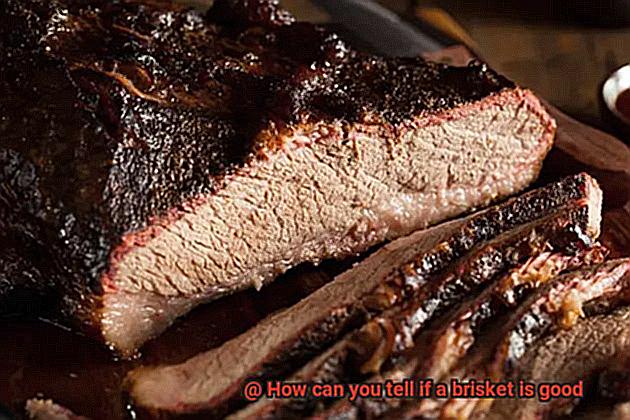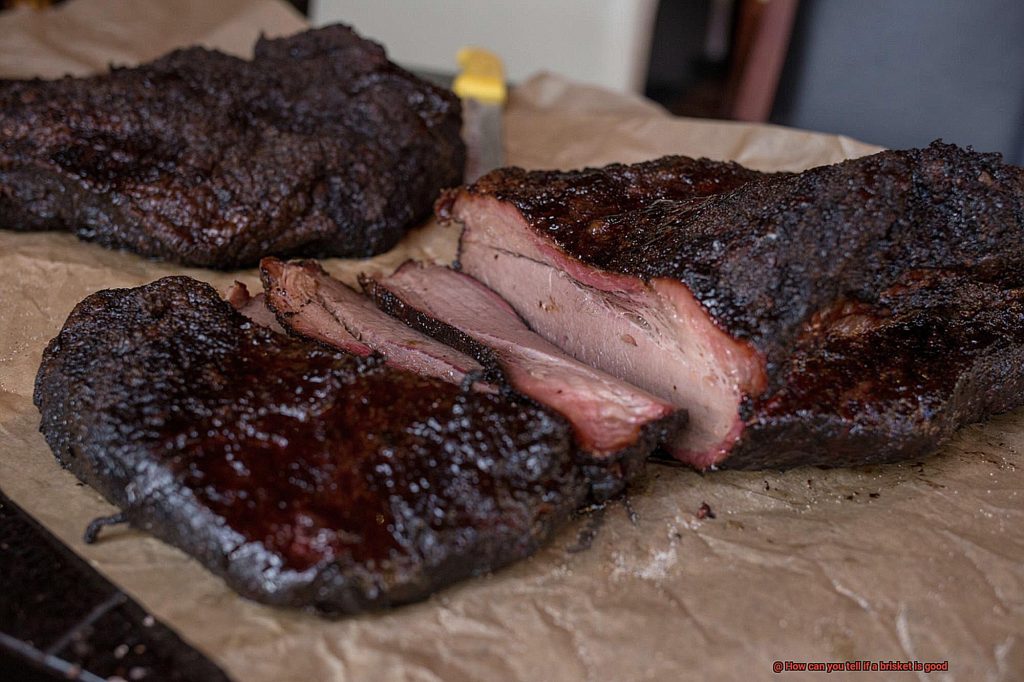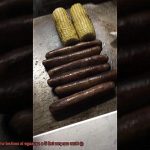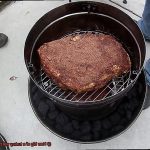Are you a meat lover who craves the taste of a perfectly cooked brisket? This popular cut of beef is a staple in many kitchens and barbecue joints worldwide. However, not all briskets are created equal. Have you ever had a tough and dry brisket that left you feeling disappointed? We understand your pain.
The key to a great brisket lies in its tenderness, juiciness, and flavor. But how can you tell if a brisket is good? That’s where we come in. In this blog post, we’ll explore the various cuts of brisket, the importance of marbling, the appropriate cooking techniques, and much more.
Whether you’re an experienced pitmaster or an amateur cook, knowing how to assess the quality of your brisket can be a game-changer. So sit tight as we uncover the secrets to making the perfect brisket and ensuring that you never have to suffer through a subpar one again.
Get ready to sink your teeth into some juicy and delicious meat because we’re about to dive deep into what makes a great brisket. With our guidance, you’ll be able to impress your friends and family with your newfound knowledge on how to tell if a brisket is good.
Contents
What is a Brisket?
It’s a popular and versatile cut that comes from the lower chest of a cow. Despite being one of the tougher cuts, when cooked correctly, it can be incredibly tender and flavorful. Brisket is a staple in Texas-style barbeque, where it’s smoked low and slow over wood for several hours.
To fully appreciate this delicious cut, you need to know what to look for when purchasing one. There are two parts to a brisket: the point and the flat. The point is the fattier end of the brisket, while the flat is leaner. Both parts are often sold together but can also be separated.
When choosing a brisket, there are several things to consider. Firstly, look for deep red color with plenty of marbling throughout. Marbling refers to the small streaks of fat that run through the meat, which helps keep it moist and tender during cooking. A good brisket should also feel firm to the touch and have a slightly sticky texture on the surface.
It’s crucial to purchase your brisket from a reputable butcher or meat market that specializes in high-quality meats. They will have information on where the meat came from, how it was raised and slaughtered, and any other important details that can affect the quality of the brisket.
Once you’ve purchased your brisket, it’s time to cook it up. A good brisket should be juicy and tender with a rich flavor. The meat should easily pull apart without being dry or stringy.
In summary, here are some key points to remember when purchasing a brisket:
- Look for good marbling throughout
- Check for consistent color with no gray spots or discoloration
- Touch the brisket to ensure it feels firm but still pliable
- Purchase from a reputable butcher or meat market

Factors to Consider When Selecting a Good Brisket
As an expert in the field, I’ll guide you through the factors to consider when selecting a good brisket that will make your mouth water.
Firstly, the grade of the meat is crucial. Beef is graded based on its quality and tenderness, with Prime being the highest grade, followed by Choice and Select. Prime grade beef has the most marbling, which enhances tenderness and flavor. Therefore, it’s best to choose brisket with plenty of marbling.
Age is another key factor in determining the tenderness of the meat. Younger animals have less connective tissue in their muscles, making their meat more tender. Therefore, if you want juicy, tender brisket, opt for meat from younger animals.
Choosing the right cut of brisket is also important. There are two cuts to choose from: the flat and the point. The flat cut is leaner and has less fat, while the point cut has more fat and is richer in flavor. When selecting a brisket, choose one that has a perfect balance of fat and meat for optimal flavor.
The color of the meat also provides valuable information about its quality. Look for bright red meat with creamy white fat, as this indicates freshness and high quality. Avoid meat with a grayish color or brown spots as this may indicate poor quality.
Finally, where you purchase your brisket matters too. Choose a reputable butcher who sources meat from high-quality farms that raise their animals ethically and sustainably. This ensures that you’re not only getting delicious meat but also supporting ethical and sustainable practices.
Appearance of the Brisket
When it comes to selecting the perfect brisket, one of the most crucial factors to consider is its color. A top-quality brisket should have an inviting deep hue with consistent marbling throughout the meat. This marbling is key to infusing the meat with flavor and juiciness. Think of it as little pockets of deliciousness scattered throughout the meat.
Moving on to the bark, that dark, crusty exterior that forms during smoking. A well-made bark should have a rich reddish-brown color, indicating proper smoke and seasoning. Additionally, a slight shine or glaze on the surface of the brisket can be a telltale sign that it has been cooked to perfection.
But appearance isn’t solely about color and texture is just as important. A well-prepared brisket should have a tender and moist texture with just enough resistance when pulled apart. Tough or stringy meat can indicate overcooking or improper preparation.
Lastly, shape and size play a vital role in appearance too. A uniform thickness throughout and well-trimmed excess fat and connective tissue will ensure even cooking and a beautiful presentation.
Feel of the Brisket
It’s an essential factor to consider when determining whether your brisket is good or not. The texture should be tender, juicy, and provide a slight resistance when pulled apart. But how do you know if your brisket has the right feel?
One of the most popular techniques to check the feel of the brisket is the poke test. It’s simple; all you need is a meat thermometer or a metal skewer. Gently poke the meat in several areas and pay attention to how it responds. If it feels soft and yielding, it’s likely undercooked. If it feels tough and unyielding, it may be overcooked. The sweet spot is when the meat feels firm but gives slightly under pressure – that’s when you know it’s just right.
But wait, there’s more. You can also use your fingers to check the feel of the brisket. Press down on the meat with your fingers and see how it responds. A good brisket should have a slight give when pressed, but not feel mushy or overly soft. If your fingers sink too easily into the meat, it could be a sign that it’s overcooked.
Moreover, keep an eye out for any gristle or tough connective tissue in the brisket. These are signs that the meat may not have been cooked long enough to break down these tougher parts, resulting in an unpleasant chewy texture.
To sum up, here are some tips for achieving the perfect feel of the brisket:
- Use the poke test with a thermometer or skewer
- Check for tenderness and resistance with your fingers
- Look for any gristle or tough connective tissue
- Remember: firm but yielding is ideal
Smell of the Brisket
In fact, the smell of a brisket can tell you a lot about its freshness and potential flavor, making it an important factor to consider when making your purchase.
So, what exactly should you be looking for in terms of the aroma of a brisket? Ideally, a good brisket should have a rich, meaty scent with just a hint of smoke. This indicates that the meat is fresh and has been cooked properly. On the other hand, if the aroma is too strong or overpowering, it could be a sign that the meat has been over-seasoned or cooked improperly.
But what about tangy or slightly acidic smells? Don’t worry – some seasonings, like vinegar or mustard-based rubs, can give off these scents. However, it’s important not to confuse these with sour or rancid odors, which are signs that the meat has gone bad.
To really get a sense of the aroma of your brisket, try taking a deep breath near the meat or even lightly pressing your nose against it (if it’s packaged properly). This will allow you to pick up on any subtle nuances in the scent that you might miss otherwise.
It’s also crucial to pay attention to any other odors in the surrounding area when assessing your brisket’s aroma. Strong or unpleasant smells nearby (like cleaning chemicals or garbage) could affect the overall scent of the meat and make it harder to accurately evaluate its quality.
Where to Buy Quality Briskets
As an expert on where to buy quality briskets, I’ve compiled some research notes to help guide you in your search.
Firstly, while your local grocery store may be a convenient option, it may not always have the best selection of briskets. To find high-quality meats, consider visiting a local butcher shop or meat market. These establishments pride themselves on offering a wider variety of meats, including top-quality briskets. Plus, the knowledgeable staff can answer any questions you may have about different cuts of meat and cooking techniques.
If you’re not able to find a good selection in-person, don’t worry. You can always order your brisket online. There are many reputable online meat suppliers that offer top-quality briskets delivered right to your doorstep. Just make sure you read reviews and do your research on the supplier before making a purchase. You don’t want to be disappointed with the quality of meat you receive.
Another option is to check out your local barbecue culture. Many barbecue restaurants and pitmasters offer catering services and can provide you with a high-quality brisket for your next backyard barbecue. This is a great option if you’re looking for someone else to handle the cooking while still enjoying a delicious brisket. Plus, you may even learn some new tricks of the trade from these experienced pitmasters.
No matter where you choose to buy your brisket, there are certain qualities to look for that indicate a good cut of meat. A thick layer of fat on one side helps keep the meat moist during cooking, while a deep red or maroon color indicates proper aging. Good marbling – the thin streaks of fat that run through the meat – adds flavor and tenderness to the final product. When selecting your brisket, take the time to examine it closely and make sure it meets these criteria.
Tips for Cooking a Perfectly Tender and Juicy Brisket
Cooking a perfectly tender and juicy brisket is an art, and it requires some knowledge and patience. But with the following tips, you’ll be able to cook a delicious brisket that will leave your guests begging for more.
Choosing the right brisket is crucial. Look for a piece of meat with good marbling, which means that there are small flecks of fat throughout the meat. This will ensure that the meat stays moist during the cooking process. Also, make sure to prepare the brisket by trimming any excess fat, leaving only a thin layer on top. This will help prevent the meat from becoming too greasy and will also allow the seasoning to penetrate the meat better.
Seasoning the brisket is also essential to achieving a flavorful and tender end result. You can experiment with different flavor combinations such as chili powder, paprika, or cumin. However, a simple rub of salt, pepper, and garlic powder is a great starting point.
When it comes to cooking the brisket, low and slow is the way to go. Set your grill or smoker to a temperature of around 225-250°F and let the brisket cook for several hours until it reaches an internal temperature of 195-205°F. This slow cooking process allows the connective tissues in the meat to break down, resulting in a tender and juicy final product.
Using a water pan can also help keep the meat moist and prevent it from drying out. Placing a water pan underneath the brisket while it cooks creates steam that will infuse the meat with moisture. After several hours of cooking, you may want to wrap the brisket in foil for faster cooking and increased tenderness.
Lastly, let the brisket rest for at least 30 minutes before slicing into it. This allows the juices to redistribute throughout the meat, resulting in a more flavorful and tender final product.
Common Mistakes to Avoid When Grilling a Brisket
Grilling a brisket can be a challenging task, but with the right techniques, you can create a mouth-watering dish that will leave your guests wanting more. However, there are some common mistakes you need to avoid when cooking brisket to ensure perfect results.
The first mistake that many people make is not trimming their brisket correctly. Trimming is an essential step as it helps to remove any excess fat that can make the meat tough and chewy. Leaving about a quarter-inch of fat on the brisket is ideal as it helps keep the meat moist during cooking. Make sure to trim any tough connective tissue as well.
Another frequent error is not allowing enough time for the brisket to cook properly. Brisket is a tough cut of meat that requires a long cooking time to break down the connective tissues and become tender. Plan on cooking your brisket for one to one and a half hours per pound at around 225°F. It may seem like a long time, but trust us, it’s worth it.
One of the most significant mistakes made when grilling a brisket is constantly opening the grill lid. Every time you open the lid, you are releasing heat and smoke, which can significantly impact the cooking time and temperature of your brisket. Instead, use a meat thermometer to check the internal temperature of your brisket without having to open the grill.
Finally, it’s crucial to let your brisket rest before slicing it. Resting allows the juices to redistribute throughout the meat, ensuring that it is moist and flavorful. Aim to let your brisket rest for at least 30 minutes before slicing and serving.
In summary, here are some tips to avoid common mistakes when grilling a brisket:
- Trim your brisket correctly.
- Allow enough time for the meat to cook properly.
- Avoid constantly opening the grill lid.
- Let your brisket rest before slicing it.
Conclusion
In conclusion, the key to a good brisket is all about achieving the perfect balance of tenderness, juiciness, and flavor. When evaluating a brisket’s quality, there are several factors to consider. These include the grade of meat, age of the animal, cut of the brisket, marbling, color, texture, aroma and where it was purchased from.
When selecting your brisket, look for deep red color with plenty of marbling throughout that feels firm to the touch and has a slightly sticky texture on the surface. A well-marbled piece of meat will melt in your mouth with each bite.
Cooking a perfectly tender and juicy brisket requires some knowledge and patience. Choose a piece of meat with good marbling and trim any excess fat leaving only a thin layer on top. Seasoning is also essential to achieving a flavorful result. Low and slow cooking at around 225-250°F for several hours until it reaches an internal temperature of 195-205°F will ensure that connective tissues in the meat break down resulting in a tender final product.
Avoid common mistakes such as not trimming your brisket correctly or constantly opening the grill lid while cooking. Letting your brisket rest before slicing it allows the juices to redistribute throughout the meat resulting in a more flavorful and tender final product.
By following these tips and tricks for selecting and cooking your brisket correctly, you’ll be able to enjoy mouth-watering dishes that will leave your guests wanting more.






